
Antoine's - Exterior
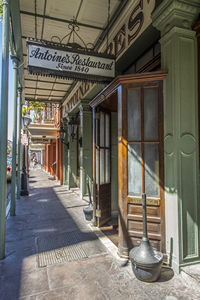
Established in 1840 by Antoine Alciatore, and still run by the same family, Antoine's is the oldest French-Creole fine dining restaurant in New Orleans.
Antoine's - Interior
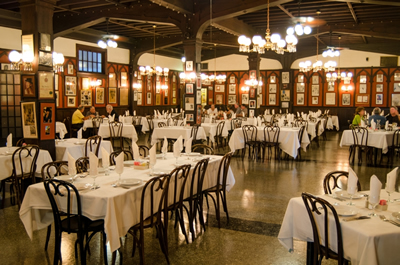
The Main Dining Room at Antoine's is one of fourteen.
Audubon Park
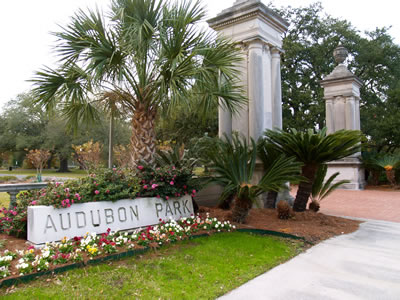
Founded in 1871 on the former site of the de Bore sugar plantation, Audubon Park was named for the naturalist John James Audubon, who lived in the city and painted many of the birds found in the area.
Audubon Stables
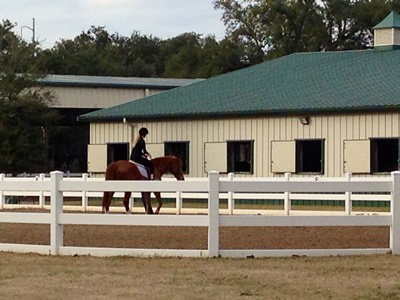
Located adjacent to the Audubon Zoo, Audubon Stables has been a fixture in the park for over 60 years.
Audubon Zoo
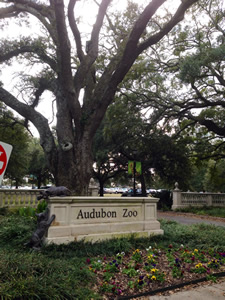
Established in 1914, the Audubon Zoo is located near the river in Audubon Park and is a major visitor attraction.
The Butterfly
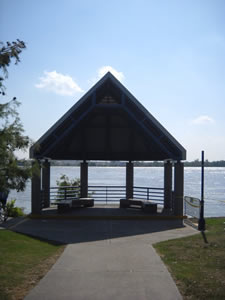
In the 1960's, a park was established on the riverfront behind Audubon Park where an iconic concrete structure resembling a butterfly was built as a viewing and concession stand.
City Park
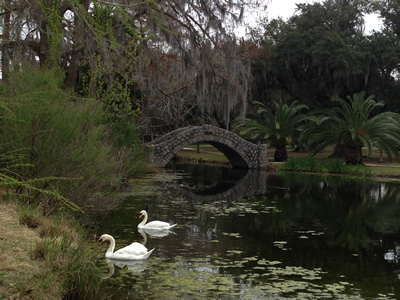
Opened in 1854 on the site of the former Allard Plantation, City Park is one of the oldest urban parks in the country. The 1,300 acre park is situated along the remains of the Metairie Bayou and contains the world's largest stand of mature live oaks.
Ebony Lounge
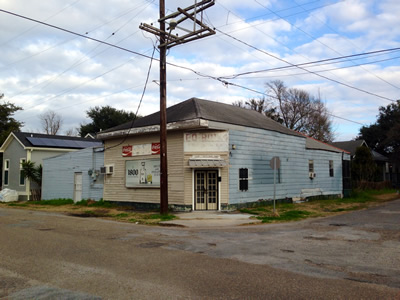
Bars such as this one are still prevalent in many old New Orleans neighborhoods.
Fannie's House
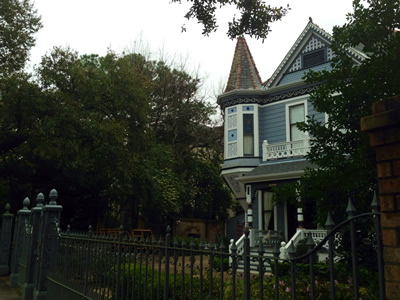
Queen Anne Victorians, built in the latter part of the nineteenth century, abound in Uptown New Orleans. This is one example.
Ferry crossing the Mississippi
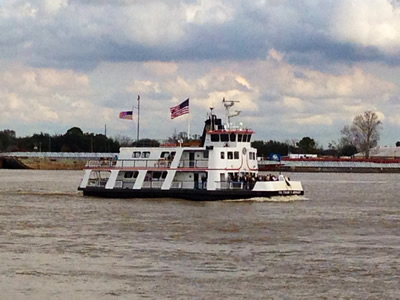
The first river ferry began service in New Orleans in 1827. The Canal Street Ferry is the third busiest ferry in the country, with over 2 million passenger trips annually.
Jackson Square
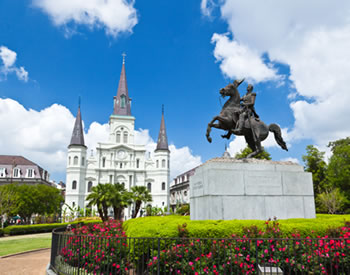
Built in the early 1700's and called the Place d' Armes by the Colonial French settlers, Jackson Square was renamed to honor General Andrew Jackson after the Battle of New Orleans in 1815. St. Louis Cathedral, built in 1727, was the first building of "brick between posts" construction.
Lafayette Cemetery
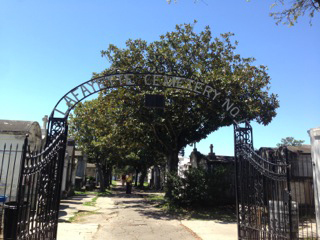
Named for the city of Lafayette that was annexed to New Orleans in 1832, Lafayette is the oldest of the seven municipal cemeteries in the city.
Lake Pontchartrain
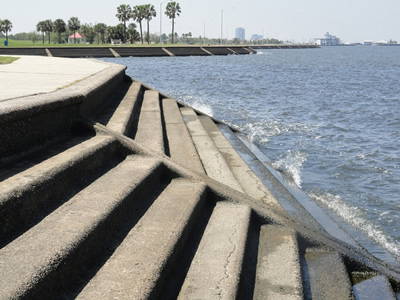
Covering 630 square miles, Lake Pontchartrain (and the surrounding area) was claimed by French explorer Pierre Le Moyne d'Iberville in 1699, who named it after the Compte de Pontchartrain.
Madame Doussan's French Perfumery
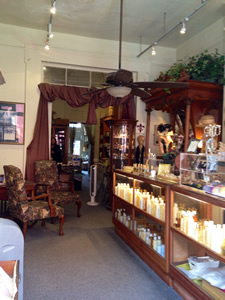
The first full-time parfumeur in New Orleans, Doussan's French Perfumery set up shop on Charters Street in 1845.
Metairie Cemetery
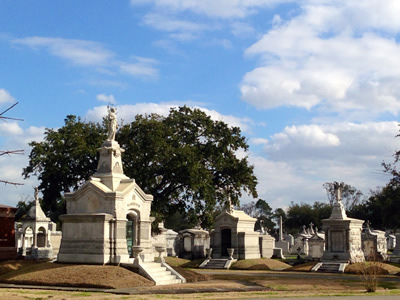
Located on the former site of an equine racetrack, Metairie Cemetery was opened in 1872. The expansive plots allowed for grander tombs built of marble and embellished with statues and stained-glass windows.
Our Lady of the Celestial Realm
Catholic School for Girls
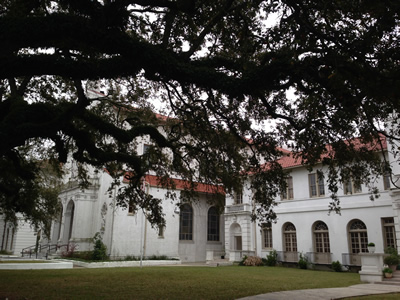
Our Lady of the Celestial Realm Catholic School for Girls is fictional, but representative of the thirty-five Catholic schools found around the city.
Plum St. Snowballs
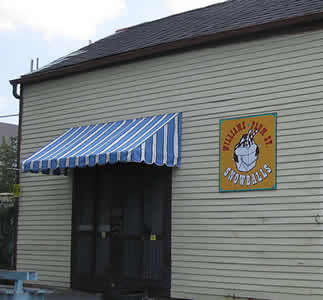
This typical neighborhood snowball stand located in Uptown New Orleans was established in 1945.
Prytania Theatre
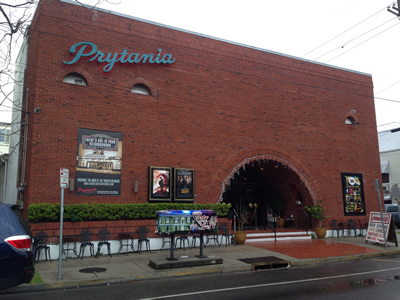
Established in 1916, Prytania Theatre is the oldest operating theater in New Orleans.
Queenie's House
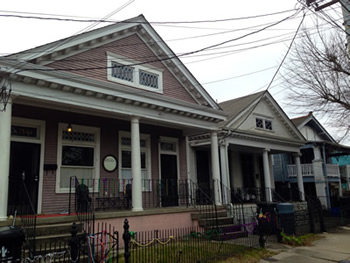
So named because you could shoot a gun through the house without hitting a wall, shotguns were the most popular style of house in the South after the Civil War. Long and narrow, with one room following another, the style is believed to have both African and Caribbean influence. Double shotguns, such as the ones in the photo, have a shared central wall.
St. Patrick's
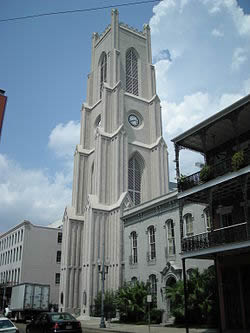
Completed in 1840, St. Patrick's was the first English speaking Roman Catholic Church in a city where services were said only in French. One mass every Sunday is said in Latin.
St. Vincent's Hospital
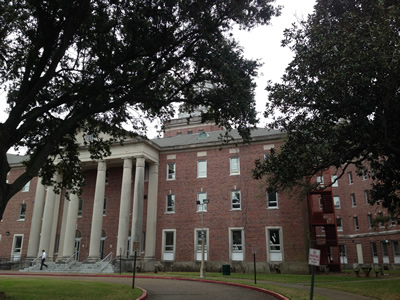
Several buildings in this Uptown neighborhood have served as mental institutions over the years. This is an example of one of them.
Starlight Jazz Club
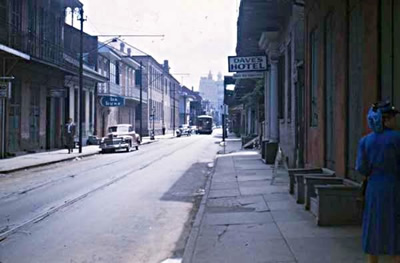
While bars on Bourbon Street, such as the Absinthe House, have been around since the early 1800's, nightclubs began to pop up in the 1920's.
Steamboat
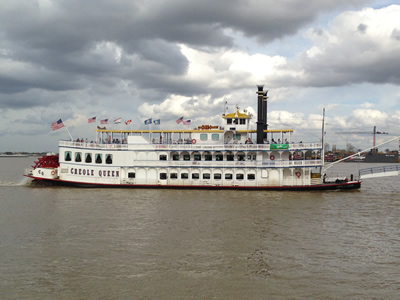
Paddlewheelers first made an appearance on the Mississippi River around 1812 and were a popular form of transportation until after the Civil War, when railroads became the prominent means of travel. Several of these boats are still available for pleasure cruises.
St. Louis Cemetery
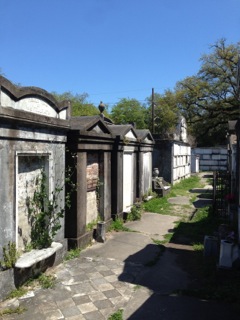
A Catholic cemetery consecrated in 1823, it features the classic brick and plaster above ground vaults. Notorious pirate Jean Lafitte is buried here.
Streetcar on St. Charles Ave.
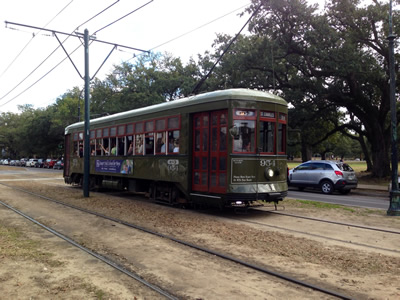
Streetcars have been and integral part of the city's public transportation system since 1820 when the trams were horse driven. Around 1831, steam engines powered the streetcars until electric cars were introduced in 1893.
Trinity Church
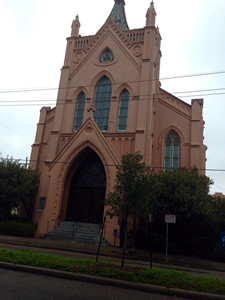
Consecrated in 1866, Trinity catered to the "American Sector" who had settled in the city of Lafayette, now part of the Garden District.
True Love Baptist Church
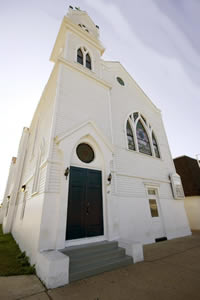
The white clapboard church shown here is typical of the 382 Baptist churches in the city.
Tug Pushing Barge
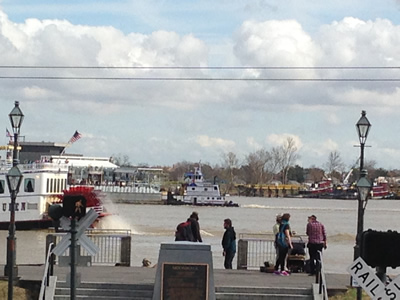
Due to the heavy current and winding curves of the river, tugs maneuvering vessels up and down the river are a daily sight.
Tugboat
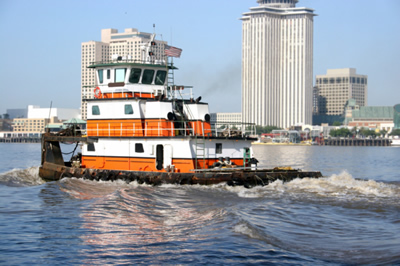
Tugboats are a common sight on the Mississippi, maneuvering barges and vessels up and down the river.
Tulane University
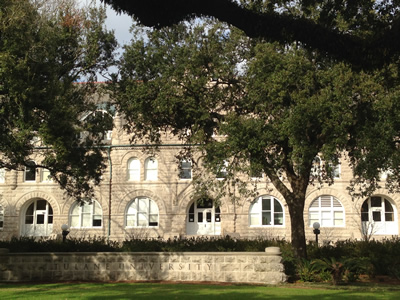
Tulane was founded as a private research university in 1834. Originally located downtown, the campus moved to the location on St. Charles Avenue in 1894.
Union Hall
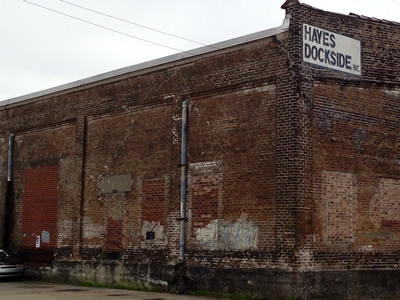
Union Hall was a music venue located in an old warehouse found along the wharves of the Mississippi on Tchoupitoulas Street.
